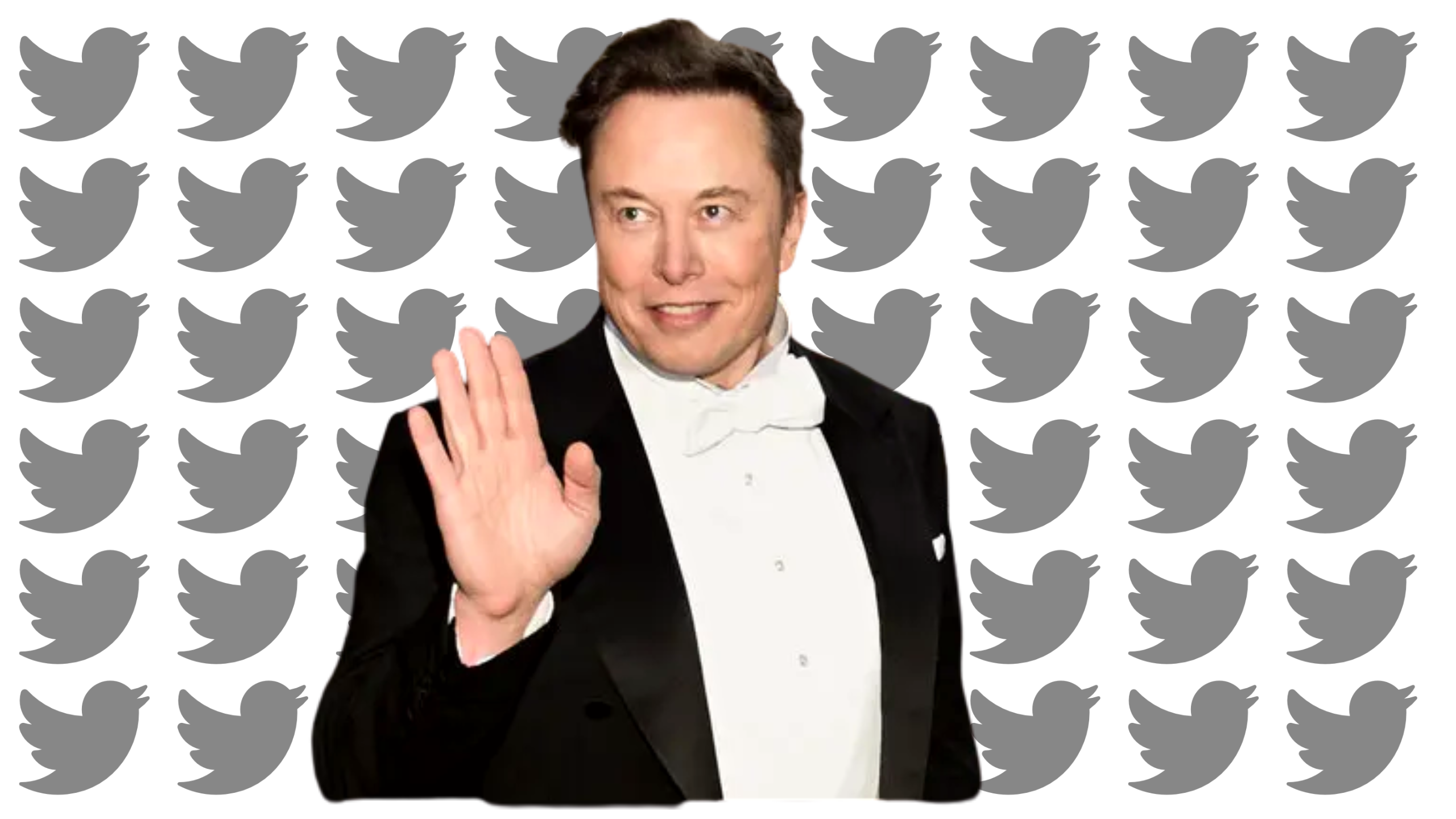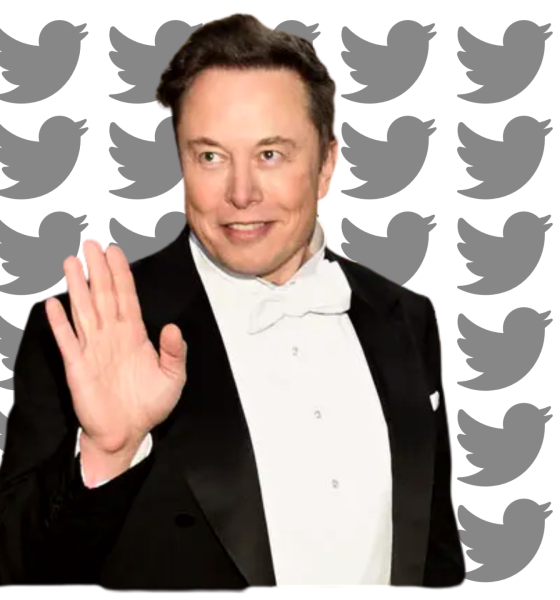After being sued by Twitter, Elon Musk responded with his own countersuit in his legal fight against the social media network.
Twitter decided to sue Elon Musk and both will go to court in October to resolve the $44 billion deal. Earlier this year, Twitter accepted the Tesla CEO’s offer to buy the platform.
Although Elon Musk had promised not to back out of the deal, this was well before he realized that something was up with Twitter’s claims that its spam and fake accounts represent fewer than 5% of its users.
He placed the acquisition on hold and then later made it clear that he would back out of the deal if Twitter wouldn’t accurately portray the number of spam, fake, and bot accounts using its platform.
Twitter sued Elon Musk, and now Elon Musk is countersuing Twitter.
Elon Musk countersues Twitter
Reuters reported that Elon Musk countersued Twitter on Friday adding that the 164-page document was not publicly available.
The lawsuit was filed a few hours after Chancellor Kathaleen McCormick of the Delaware Court of Chancery ordered an October 17th trial.
Luigi Crispo, a Twitter shareholder with 5,500 shares in the company, also sued Elon Musk on Friday. Crispo wants the court to order Elon Musk to close the Twitter deal and to find that he breached his fiduciary duty to Twitter shareholders.
He also wants the court to award damages for losses. According to Reuters, Elon Musk owes a fiduciary duty to Twitter’s shareholders due to his 9.6% stake in Twitter. And also because the takeover agreement enables ElonMusk to veto many of Twitter’s decisions.
The Silver lining
Although there really isn’t much of a silver lining for Twitter or Elon. Lawsuits are not an ideal source of joy for many parties involved in them–at least, I wouldn’t think they are.
However, I feel as if the lawsuit is bringing some of the issues many people on Twitter are dealing with to the forefront. Such as shadow banning.
This happened to a few people (including Teslarati!) on Twitter. In many cases, a user will tweet but that tweet will not show up in searches.
And if they reply to a tweet or like that tweet, Twitter hides it. In my tweet below, I shared a thread filled with screenshots and video evidence of this happening to Teslarati.
🤔
— Elon Musk (@elonmusk) July 18, 2022
Twitter has four types of bans:
- Search suggestion ban.
- Search ban.
- Ghost ban.
- Reply deboosting.
Fortunately, the ban on Teslarati is lifted, although for a while there, there was a back and forth for a couple of days after Elon had replied to my tweet.
It shouldn’t have to take a response from Elon Musk for Twitter to remove bans on real accounts. That’s not fair to Elon Musk or the users who are being silenced by Twitter.
I’ve also noticed that there have been fewer bots since the lawsuit has begun. However, I’ve noticed that there have been fewer engagements and I am not the only one noticing this.
Whether or not these are directly or indirectly caused by the ongoing legal saga, no one knows. But we are noticing.
Yes 100%- also noticing less spam bots impersonating you.
— Zack (@BLKMDL3) July 30, 2022
One thing we can count on is for this lawsuit to reveal a lot.
I’d love to hear from you! If you have any comments, or concerns, see a typo, you can email me at johnna@teslarati.com. You can also reach me on Twitter @JohnnaCrider1

Elon Musk
Starlink passes 9 million active customers just weeks after hitting 8 million
The milestone highlights the accelerating growth of Starlink, which has now been adding over 20,000 new users per day.

SpaceX’s Starlink satellite internet service has continued its rapid global expansion, surpassing 9 million active customers just weeks after crossing the 8 million mark.
The milestone highlights the accelerating growth of Starlink, which has now been adding over 20,000 new users per day.
9 million customers
In a post on X, SpaceX stated that Starlink now serves over 9 million active users across 155 countries, territories, and markets. The company reached 8 million customers in early November, meaning it added roughly 1 million subscribers in under seven weeks, or about 21,275 new users on average per day.
“Starlink is connecting more than 9M active customers with high-speed internet across 155 countries, territories, and many other markets,” Starlink wrote in a post on its official X account. SpaceX President Gwynne Shotwell also celebrated the milestone on X. “A huge thank you to all of our customers and congrats to the Starlink team for such an incredible product,” she wrote.
That growth rate reflects both rising demand for broadband in underserved regions and Starlink’s expanding satellite constellation, which now includes more than 9,000 low-Earth-orbit satellites designed to deliver high-speed, low-latency internet worldwide.
Starlink’s momentum
Starlink’s momentum has been building up. SpaceX reported 4.6 million Starlink customers in December 2024, followed by 7 million by August 2025, and 8 million customers in November. Independent data also suggests Starlink usage is rising sharply, with Cloudflare reporting that global web traffic from Starlink users more than doubled in 2025, as noted in an Insider report.
Starlink’s momentum is increasingly tied to SpaceX’s broader financial outlook. Elon Musk has said the satellite network is “by far” the company’s largest revenue driver, and reports suggest SpaceX may be positioning itself for an initial public offering as soon as next year, with valuations estimated as high as $1.5 trillion. Musk has also suggested in the past that Starlink could have its own IPO in the future.
News
NVIDIA Director of Robotics: Tesla FSD v14 is the first AI to pass the “Physical Turing Test”
After testing FSD v14, Fan stated that his experience with FSD felt magical at first, but it soon started to feel like a routine.

NVIDIA Director of Robotics Jim Fan has praised Tesla’s Full Self-Driving (Supervised) v14 as the first AI to pass what he described as a “Physical Turing Test.”
After testing FSD v14, Fan stated that his experience with FSD felt magical at first, but it soon started to feel like a routine. And just like smartphones today, removing it now would “actively hurt.”
Jim Fan’s hands-on FSD v14 impressions
Fan, a leading researcher in embodied AI who is currently solving Physical AI at NVIDIA and spearheading the company’s Project GR00T initiative, noted that he actually was late to the Tesla game. He was, however, one of the first to try out FSD v14.
“I was very late to own a Tesla but among the earliest to try out FSD v14. It’s perhaps the first time I experience an AI that passes the Physical Turing Test: after a long day at work, you press a button, lay back, and couldn’t tell if a neural net or a human drove you home,” Fan wrote in a post on X.
Fan added: “Despite knowing exactly how robot learning works, I still find it magical watching the steering wheel turn by itself. First it feels surreal, next it becomes routine. Then, like the smartphone, taking it away actively hurts. This is how humanity gets rewired and glued to god-like technologies.”
The Physical Turing Test
The original Turing Test was conceived by Alan Turing in 1950, and it was aimed at determining if a machine could exhibit behavior that is equivalent to or indistinguishable from a human. By focusing on text-based conversations, the original Turing Test set a high bar for natural language processing and machine learning.
This test has been passed by today’s large language models. However, the capability to converse in a humanlike manner is a completely different challenge from performing real-world problem-solving or physical interactions. Thus, Fan introduced the Physical Turing Test, which challenges AI systems to demonstrate intelligence through physical actions.
Based on Fan’s comments, Tesla has demonstrated these intelligent physical actions with FSD v14. Elon Musk agreed with the NVIDIA executive, stating in a post on X that with FSD v14, “you can sense the sentience maturing.” Musk also praised Tesla AI, calling it the best “real-world AI” today.
News
Tesla AI team burns the Christmas midnight oil by releasing FSD v14.2.2.1
The update was released just a day after FSD v14.2.2 started rolling out to customers.

Tesla is burning the midnight oil this Christmas, with the Tesla AI team quietly rolling out Full Self-Driving (Supervised) v14.2.2.1 just a day after FSD v14.2.2 started rolling out to customers.
Tesla owner shares insights on FSD v14.2.2.1
Longtime Tesla owner and FSD tester @BLKMDL3 shared some insights following several drives with FSD v14.2.2.1 in rainy Los Angeles conditions with standing water and faded lane lines. He reported zero steering hesitation or stutter, confident lane changes, and maneuvers executed with precision that evoked the performance of Tesla’s driverless Robotaxis in Austin.
Parking performance impressed, with most spots nailed perfectly, including tight, sharp turns, in single attempts without shaky steering. One minor offset happened only due to another vehicle that was parked over the line, which FSD accommodated by a few extra inches. In rain that typically erases road markings, FSD visualized lanes and turn lines better than humans, positioning itself flawlessly when entering new streets as well.
“Took it up a dark, wet, and twisty canyon road up and down the hill tonight and it went very well as to be expected. Stayed centered in the lane, kept speed well and gives a confidence inspiring steering feel where it handles these curvy roads better than the majority of human drivers,” the Tesla owner wrote in a post on X.
Tesla’s FSD v14.2.2 update
Just a day before FSD v14.2.2.1’s release, Tesla rolled out FSD v14.2.2, which was focused on smoother real-world performance, better obstacle awareness, and precise end-of-trip routing. According to the update’s release notes, FSD v14.2.2 upgrades the vision encoder neural network with higher resolution features, enhancing detection of emergency vehicles, road obstacles, and human gestures.
New Arrival Options also allowed users to select preferred drop-off styles, such as Parking Lot, Street, Driveway, Parking Garage, or Curbside, with the navigation pin automatically adjusting to the ideal spot. Other refinements include pulling over for emergency vehicles, real-time vision-based detours for blocked roads, improved gate and debris handling, and Speed Profiles for customized driving styles.










